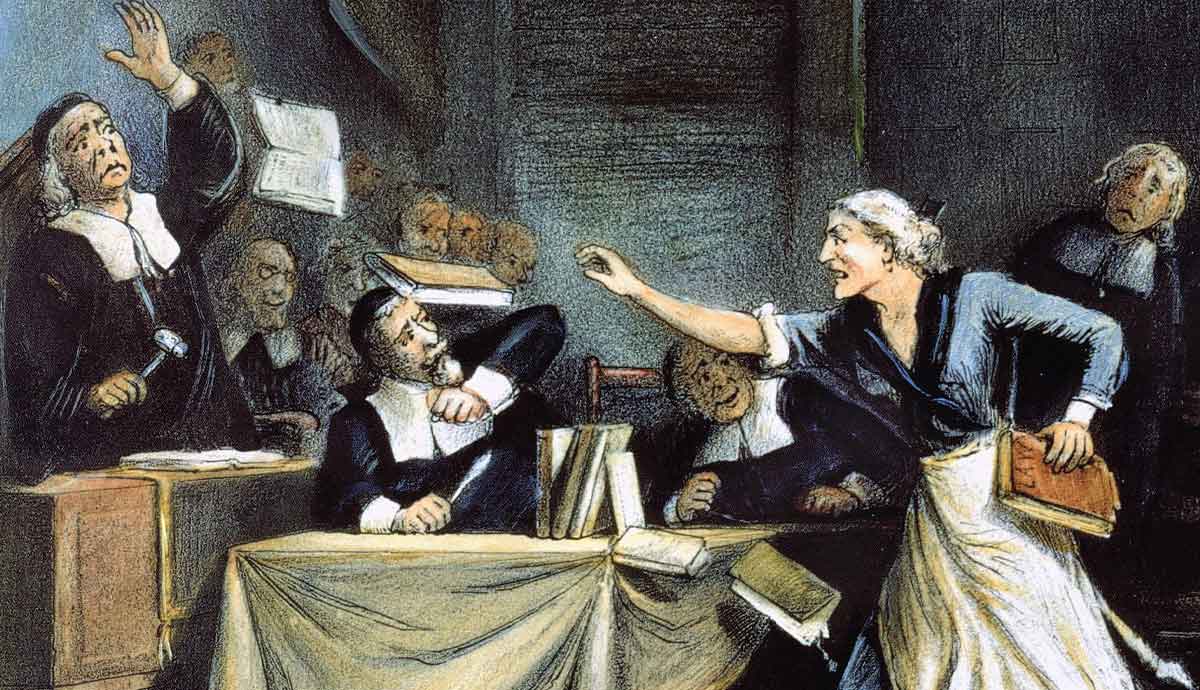
One of the most terrifying moments in our history, the Salem Witch trials took place in 1692 within the small village of Salem (present day Danvers) in Massachusetts. Around 200 men and women were accused of witchcraft, while 14 women, five men and even two dogs were found guilty and executed for a series of supposed supernatural crimes, a sequence of events that today have been attributed to a mass hysteria. But what caused the village to be whipped up into such a frenzy? Over the centuries, scholars have debated the possible causes that led to the infamous Salem witch trials, which range from the socio-economic to the physiological, as we outline below.
A Belief in Witches

The belief in humans acting as witches possessed by evil, supernatural powers had been around since at least the 14th century. Running hand in hand with religions including Christianity, there was a widespread belief across Europe and the United States that witches received the power to cause ill intent through contact with the devil. The destructive ‘witchcraft phase’ was rampant across the Western world from the 14th to the 17th centuries, during which time many thousands of witches, predominantly women, were accused and executed. Within various early American communities, harsh living conditions such as illness, disease, bad weather and poverty were often attributed by community members to witchcraft, in a bid to make sense of the cruelties of the world in which they were living.
King William’s War

War broke out between English Monarchs William and Mary, and France in the American colonies in 1698, known today as King William’s War. Refugees fled from the worst affected areas in New York, Quebec and Nova Scotia into wider communities including Salem. This influx of new people put the small village of Salem under immense strain as the fight for limited resources turned bitter. The village’s most fundamental Puritans blamed the ensuing conflicts on the work of the devil, opening up an environment of terror.
Economic Hardships

Various scholars believe the economic hardships caused by a “little ice-age” from 1550-1800 played a significant role in triggering the collective mindset that led to the Salem witch trials. The agricultural community of Salem was hit hard by these harsh weather conditions which destroyed many people’s livelihoods, led to mass food shortages, and slowed the population growth within the area. This, coupled with the belief that witches could control the forces of nature and even cause physical harm to people created a culture of fear, suspicion and scapegoating.
Divisions Between East and West Salem Village

In Paul Boyer and Stephen Nissenbaum’s book Salem Possessed: The Social Origins of Witchcraft, 1974, they argue that there was an east-west economic divide within the Village of Salem, with poorer families to the west, and wealthier families to the east, where they were nearer the town of Salem. In their version of events, it was Western villagers who became increasingly suspicious of their eastern neighbors, and began accusing them of witchcraft. They described this time period as a “mortal conflict involving the very nature of the community itself.” However, other critics have questioned this theory following deeper analysis of maps, arguing the socio-economic divisions between the village of Salem were not so clear cut.
Fungus Poisoning

When several young girls within Salem began experiencing strange, erratic behavior and unexplainable convulsive fits, locals immediately assumed the devil was at play. They blamed three women, including Tituba, an African slave, who confessed during a trial to signing a book with the devil in a bid to bring down the Christian communities of Salem. Her strange confession planted widespread fear and panic, leading to an ongoing ordeal of arrests and executions. The causes of the girls’ changes have been a subject of debate for centuries, but one of the most widespread and accepted theories is that the girls were suffering from a condition called convulsive ergotism, caused by a grain fungus prevalent in rye, which was one of Salem’s primary food sources.
Often stored in damp climates for extended periods, the infested grains could trigger a series of hallucinatory effects if consumed, including vertigo, seizures and skin-crawling sensations.
Brain Inflammation

Another possible cause for the girls’ symptoms as discussed by Laurie Winn Carlson in her book A Fever in Salem, 1999, was encephalitis lethargica, a brain inflammation caught from birds and insects. The symptoms of this rare phenomenon include behavioral changes, tremors and abnormal eye movements. Carlson notes that when a doctor was unable to explain the girls’ shared behaviors, he came to the conclusion that they had all been affected by witchcraft. Such medical diagnoses were unfortunately surprisingly common for unknown medical ailments, at a time when the fields of science and medicine were so full of fear and mystery.










